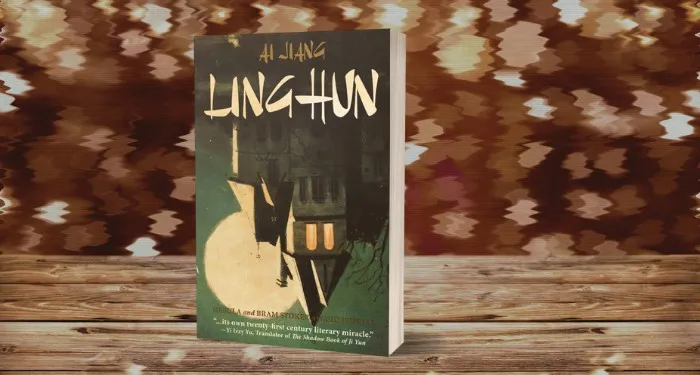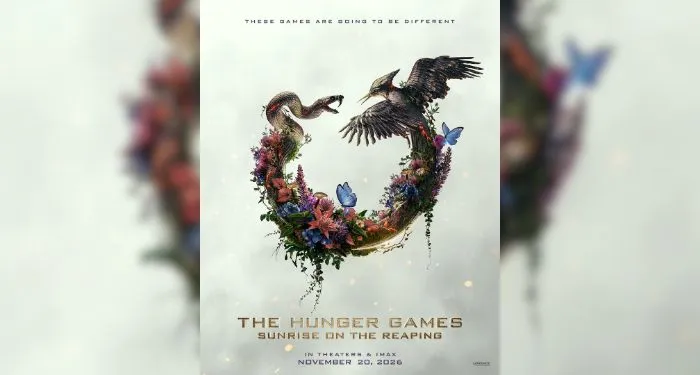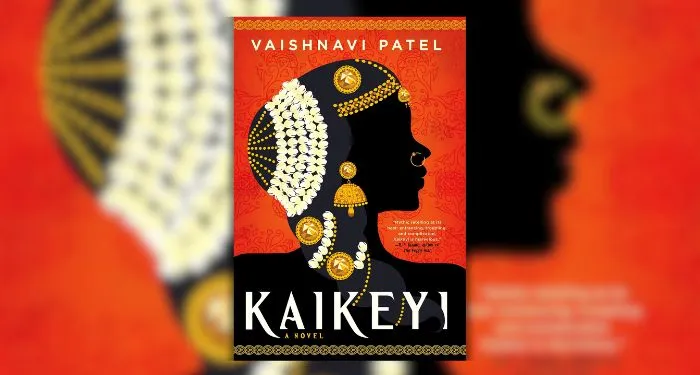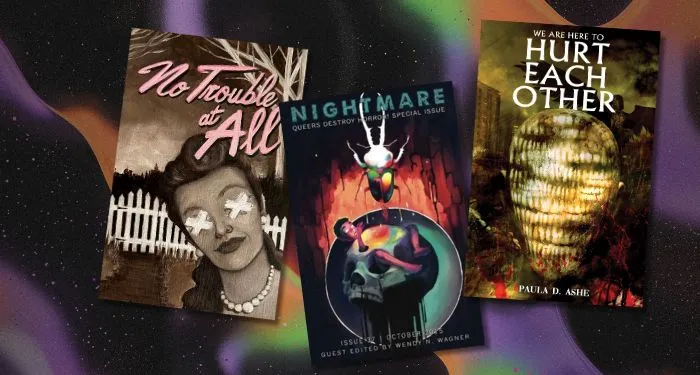“I’d like to play the piano for you now,” Alice Coltrane announced to her audience at UCLA’s Schoenberg Hall on April 16, 1978. “One selection,” she explained, “was composed several years ago and is entitled ‘One for the Father.’ It’s a song I’ve dedicated to John Coltrane. And another selection entitled ‘Prema,’ which means love, divine love.” These darkly beautiful solo pieces, minor pentatonic blues played in a grand, flowing, late-nineteenth-century style, can be heard on the live album of the performance, Transfiguration, her last commercial recording for the next twenty-six years. Like all of her earlier albums, it commemorates the work of her late husband, not simply by drawing on his musical vocabulary but by promoting a vision of spiritual transcendence, or what she called “universal consciousness.”
She referred to him as “the Father.” Not “John,” not even “my late husband.” The jazz saxophonist and composer John Coltrane, who died of liver cancer in 1967, was the father of their three sons and the adoptive father of her daughter from her first marriage. But as the bassist Reggie Workman, a frequent collaborator of both John and Alice, told me, what she meant was that he was also “the father of the era of that music.” In the world of Black music Coltrane was widely seen as a prophet—a model of commitment, service, and sacrifice as noble as Martin Luther King Jr. or Malcolm X.
But if John was “the Father,” what did that make Alice? Was she “the Mother” or one of his many children? She sometimes implied the latter, speaking of herself as a mere disciple who could never measure up to the master’s example. The musicians who played with her—many of whom had worked with him—knew otherwise. With a powerfully soulful sound on piano, organ, and harp, and an original sensibility as a composer, arranger, and bandleader, Alice more than earned the praise Amiri Baraka had bestowed on John: “the heaviest of spirits.” But after retiring from commercial music and founding a Hindu ashram in Los Angeles County, where she wore the orange robes of a guru and preached under the name Swamini Turiyasangitananda (the Transcendental Lord’s Highest Song of Bliss), she all but vanished from the jazz scene. Aside from her album Translinear Light (2004), released three years before her death, the only recordings she made in her last three decades were of bhajans, Hindu devotional chants sung mostly in Sanskrit and distributed among her followers on self-produced cassette tapes. In her pioneering study of Alice’s work, Monument Eternal (2010), the late ethnomusicologist Franya J. Berkman writes of hearing one of those cassettes at a Brooklyn yoga studio in the early 1990s:
I asked the instructor for the name of the artist. “Alice Coltrane, Divine Songs,” she answered. “Alice who?” I asked. “Coltrane,” she replied. “Coltrane—like John Coltrane?” I inquired. “Yes, his wife,” she confirmed.
For weeks, I searched intently for Alice Coltrane’s music but could find nothing in any of the major record stores in Manhattan.
Today Alice Coltrane is nearly as well known as John. The albums she recorded for Impulse Records in the 1960s and 1970s—notably Ptah, the El Daoud, Journey in Satchidananda, and Universal Consciousness—are recognized as classic expressions of “spiritual jazz” and widely sampled. Her religious music, once confined to ashrams and yoga studios, has been commercially released in the last decade, on albums like The Ecstatic Music of Alice Coltrane Turiyasangitananda and Kirtan: Turiya Sings.
There’s also a growing fascination with the ashram she presided over in Agoura Hills. What some might have been tempted to dismiss as an Age of Aquarius commune, fragrant with incense and Southern Californian exoticism, now looks like a utopian community led by a charismatic Black woman. If you want to get a taste of the world Alice created for her followers, the Criterion Channel has been streaming her public access television show Eternity’s Pillar, made in the mid-1980s. It alternates between scenes of blissed-out men and women in flowing white garments chanting on the grass in Sanskrit and of Coltrane playing stately piano solos suggestive of hymns and spirituals, now and then turning to the camera with a beatific smile.
That Alice Coltrane, an African American woman from Detroit, died a Hindu guru in the foothills of the Santa Monica Mountains is a story no less extraordinary than her husband’s story of overcoming addiction and awakening to the Lord’s message. It’s also far stranger. While John was likened to a religious leader by his admirers, Alice became one. As the leader of a largely African American congregation, she reinvented her adoptive faith by interweaving it with the sounds and practices of the Black church, adapting Hinduism to her needs much as her husband adapted Indian music to his. For all her eagerness to renounce the life she had known prior to her religious awakening, she was unwilling to renounce her own heritage of worship and musical expression. As the pianist Matthew Shipp notes, her music “retained a Black spiritual sound even as she explored these Hindu ideas.”
The revival of interest in Alice’s music and in her life as a religious leader has been spearheaded by Black women admirers, including the video artist Cauleen Smith and the harpist Brandee Younger, both of whom are featured in “Alice Coltrane, Monument Eternal,” an exhibition dedicated to her that was recently on view at the Hammer Museum in Los Angeles. At times Alice-worship can verge on a doting, even cultish veneration, not unlike the reverence inspired by John Coltrane. But this is a small price to pay for the rediscovery of a major artist who created a distinctive style on three instruments (piano, harp, organ), as well as some of the most striking music of her time. The shadow cast by the Father has at last been lifted from her work.
Not that Alice ever sought to be liberated from his shadow, in which she found a kind of sanctuary, a way of keeping him close and spreading his message. Her early albums were an unmistakable extension of his music, featuring many of his sidemen (the drummer Rashied Ali, the saxophonist Pharoah Sanders, the bassist Jimmy Garrison) and relying on a similar lexicon of “Eastern” sounds, pentatonic modes, and bass ostinatos. Like John, she would often “double up” instruments in her ensembles to create a thicket of sound, a sense of collective chant and ritualized expression. At her outstanding 1971 concert at Carnegie Hall, the recording of which was released for the first time in its entirety last year, Alice plays with two saxophonists, two drummers, and two bassists. In a twenty-eight-minute cover of John’s “Africa,” she uses her left hand to establish a drone-like figure while playing block chords with her right, creating a mighty springboard for Sanders and Archie Shepp, whose screams in unison on tenor saxophone bring the piece to a close with blistering intensity. To listen to this concert, or to Alice’s classic albums on Impulse, is to hear not only musicians associated with John but a shared sensibility: an irony-free zone of righteous purpose and spiritual striving that he all but patented. Future historians of jazz may one day speak of Alice and John as the inventors of a distinct style of Black improvised spiritual music.
But if John’s music is defined by a relentless, agonized seeking, Alice’s is illuminated by the radiance of arrival. It begins where his ends, ultimately taking up residence in the “stellar regions” that he struggled to reach at the end of his short life, a transcendent, ethereal realm beyond jazz (a word she rejected). By the end of the 1970s she was no longer making music for the stage, much less the club. Her art was reshaped, even redefined, by her work as a spiritual leader.
It could be argued that Alice pursued a direction in which John was headed when he died. But it may be more accurate to say that she carried on a project that the couple developed together, in which musical expression and spiritual service were indivisible. When Paul Griffiths wrote that “there may be no parallel in musical history” to the composer Olivier Messiaen’s lifelong collaboration with his wife, the pianist Yvonne Loriod, he overlooked the Coltranes. Like Messiaen, a devout Catholic, Alice started out as a church organist; like Loriod, she met her husband when his first marriage was crumbling. Both couples were deeply pious; both were attracted to the timbral variety, static patterns, and ritual designs they discovered in non-Western music. A widow at twenty-nine, Alice enjoyed far less time with her husband than Loriod did with Messiaen, but the Coltranes’ creative bond was equally symbiotic, and her commitment to his work continued long after his death. In her own music, she sought to create what Messiaen called a sense of éblouissement—spiritual dazzlement—like the effect of stained glass in a church.
She was born Alice Lucille McLeod on August 27, 1937, the fifth of her parents’ six children. The McLeods came from the Deep South, as part of the wave of Black migrants who helped turn Detroit into one of the country’s largest “chocolate cities.” Musical talent ran in the family. Alice’s mother, an accomplished pianist, had a beautiful alto voice and was a member of Mount Olive Baptist Church’s senior choir, which was directed by her first husband. Alice’s half-brother, Ernest Farrow, was a professional bass player who performed in Detroit jazz clubs. Her younger sister, Marilyn, a year and a half her junior, went on to write music for Motown.
Alice took up the piano at age seven; before long she was playing the organ in church and accompanying gospel groups. She demonstrated such gifts that her congregation awarded her a scholarship to study theory and harmony at a community music school. Ernest, who was nine years older, brought her to clubs where she heard the female pianist Terry Pollard, an early role model, and Barry Harris, who taught her chords and voicings. By her late teens Alice was sitting in with bands led by the guitarist Kenny Burrell and the reedman Yusef Lateef and participating in jam sessions at the home of Joe Brazil, a saxophonist friendly with Coltrane. At Northeastern High School, her friend the saxophonist Bennie Maupin told me, she learned to play the timpani, glockenspiel, and snare drum.
But her most memorable experience as a young musician took place at the Mack Avenue Church of God in Christ, where she discovered the power of “down home” religion. Playing with the church’s choir was “the gospel experience, musically, of my life!” she recalled. “The Lord just completely swept through.” Nurses were on hand to attend to “those who were highly overcome.” Alice never drew much of a distinction between gospel and jazz or between spiritual and secular music: all, in her view, were expressions of the same divine spirit.
In 1960 Alice left for Paris with her first husband, Kenny “Pancho” Hagood, a singer who’d recorded with Thelonious Monk and Charlie Parker. She found a mentor in the great bop pianist Bud Powell and gave birth to her daughter, Michelle. But within a year she divorced Hagood and moved back to Detroit, where she resumed her work in clubs. When she wasn’t playing music, she was studying it. The musician who fascinated her most was Coltrane, whom she had heard with Miles Davis’s band in Paris and who had just released his large-ensemble work Africa/Brass, which she and Maupin took turns transcribing. In 1962 Alice saw John leading his own band at Detroit’s Minor Key. His influence on her playing can already be felt in her work with the vibraphonist Terry Gibbs, under whose leadership she recorded three albums, including Jewish Melodies in Jazztime. “She was playing runs she got from listening to John,” Gibbs recalled, “these Eastern style runs on minor songs and they sounded very authentic. I was the Jew, and she was wiping me out.”
In the summer of 1963 Gibbs’s band opened for the Coltrane Quartet at Birdland in New York City. Listening to John’s recordings, Alice already “had an inner feeling about him.” When she heard him at Birdland, “that same feeling would come back, like some kind of inner knowing.” John, who had just split with his wife, came over to the booth where she was sitting with Vishnu Wood, the bassist in Gibbs’s band, whom she knew from Detroit. “You two look like a nice couple,” he said, and Wood got up and left. “It was very clear what was happening,” Wood told me. “He had decided while we were playing that she was the one he wanted.” Alice recalled having “very little to say beyond ‘hello’” for the first few days of their acquaintance. But by “the end of the week—well it was the termination of my time with Terry Gibbs.” They moved into a house in Dix Hills, Long Island, where they built a studio in the basement. (They married in Juarez two years later.) John adopted Michelle as his daughter, and Alice gave birth to three sons: John Jr., born in 1964, Ravi, born in 1965, and Oran, born two years later.
In May 1966 Alice became the pianist in Coltrane’s group, with the departure of McCoy Tyner. John and Alice had begun performing together earlier that year at a club in San Francisco, and he liked what he heard. She was comfortable playing without meters, bar lines, or fixed harmonic indications. And she was able to combine a blues-based pentatonic language—a language evocative of the church—with flashes of extreme dissonance, fanning out to the upper and lower registers of the piano. When she first joined the group, “I only played through two or three octaves like we all did, chording for the soloists. But John said, ‘You have all those keys. Why don’t you play all of them as completely as you can?’” She took him at his word: “You will not hear me play within a two-octave range, or a three. You’re gonna hear the entire piano from one to eighty-eight.”
Alice’s playing bore little resemblance to Tyner’s dancing, propulsive style. It was impressionistic, warbling, often circular, emphasizing color over linear movement; her solos were rapturous, in a lush, almost classical vein. “Alice Coltrane is not a ‘hard’ pianist who drives the music with rhythmic accentuations,” one writer complained. But Coltrane, who was by then less interested in harmonic progression than in stasis, knew what he wanted in an accompanist. “John was looking for a different approach in the instrument, and what Alice heard in the piano was more attuned to where he was then,” Workman told me. In Alice, Coltrane also had a spiritual partner, a woman who’d grown up in the church but was now looking beyond it, to non-Western forms of religious practice. In John, Alice had found an artist who encouraged her to “fully express what you had. Not half of it…or three-quarters—the entire experience of the expressive self. Truth on your instrument.”
When John died in July 1967, Alice was left with four small children to raise on her own. Two years later her brother Ernie drowned. Yet far from retreating, she threw herself into making music, launching her career as a leader on Impulse Records, the label her husband had made famous. In a September 1968 interview she declared that she intended to “play music according to the ideals set forth by John” and to “try to elevate the music as much as I possibly can.” Her first two albums, A Monastic Trio (1968) and Huntington Ashram Monastery (1969), on which she played both piano and harp, do exactly this. “The Sun,” a deeply felt rubato blues on A Monastic Trio, opens with a recording of John reciting a prayer with Pharoah Sanders—“May there be peace and love and perfection throughout all creation, oh God”—before a single note is played. The man she had begun to call “Ohnedaruth” (“compassion” in Sanskrit) is the sun around which the music turns, hauntingly present in her use of Coltrane-like bass vamps, her choice of sidemen (Sanders, Rashied Ali, Jimmy Garrison), and titles like “Gospel Trane,” “I Want to See You,” and “IHS” (“I Have Suffered”).
But if this is music of mourning, it is also music of stoical affirmation and perseverance, not least in the introduction of the harp, a gift from John that had arrived just after his death. Practicing the harp was her way of mourning him, and she practiced it so frequently that she developed blisters. The instrument reminded her of “ancient Egypt” and became her signature sound, allowing her to suggest a kind of astral groove. Not everyone was persuaded by her harp playing. The critic John Litweiler grumbled that it produced little more than “waves of sound, a wispy impressionistic feeling without urgent substance.” But the airy sensation of her glissandos—what she called “that rush of wind”—turned out to be precisely what has captivated generations of listeners.
In his liner notes to A Monastic Trio, Baraka described Alice as an “earth bound projection of John’s spirit…a vector, a further earth exploration.” The reality was more painful. Sometime in the late 1960s—the exact date is unclear—she plunged into a depression. In her book Monument Eternal, first published in 1977 and recently reissued by Akashic, she wrote unflinchingly of the ordeal. She subjected herself to “tapas,” endurance tests of physical and mental suffering by which she hoped to “purify” herself. In a matter of weeks she went from 128 to 105 pounds. She burned her right hand over a flame in “an excruciating test to withstand heat,” watching her flesh fall away and her nails turn black. “The greater part of my body resembled the stigmata of a crucified person—blood issued from almost every part of it.” With suffering came hallucinations of “gold and silvery fire” burning on top of her bookshelves and inside her body. She imagined that she could see the thoughts of other people and traveled through “astral worlds.” These tapas led to her hospitalization, but they also brought her closer to the Lord, she said—so close that she would never again feel alone: “I’ve been very close to the end of my life, and I’ve been given my freedom now.”
The man she credited with helping her to realize her freedom was the Indian guru Swami Satchidananda, to whom she had been introduced by Vishnu Wood. Under his guidance, she took the Hindu name Turiyasangitananda. Her music quickly grew in confidence, still faithful to John’s teachings but in no way confined by them. On her third album, Ptah, the El Daoud, recorded in January 1970 with Sanders and Joe Henderson on saxophones and flutes, Ron Carter on bass, and Ben Riley on drums, she created her first wholly gripping work of art. Sanders and Henderson are electrifying, whether they’re playing flutes in unison against a swirl of harp arpeggios in the exquisite “Blue Nile” or brawling with each other on tenor saxophone in the ominously engrossing march “Mantra.” But what sets this album apart from the free jazz blowing sessions of the time is Alice’s acute sense of architecture and her riveting blues lyricism. The most effective piece on the album features her with Carter and Riley in a trio without horns. An eight-minute modal blues in E-flat minor, “Turiya and Ramakrishna” alludes to the name she adopted and is, in her words, “more of a feeling than a melody.” It revolves around three notes and, after an extraordinary solo by Carter, concludes with an allusion to “Parker’s Mood” by Charlie Parker. To listen to it is to experience a kind of trance: you enter the “feeling” as she mines its depths, only to find yourself transported, by the end, in what John called “ascension.” In the hypnotic blues of Ptah, the El Daoud, Alice had begun to propose an answer to the question that had preoccupied her: What happens to the music, where should it go, after the death of the Father?
The follow-up, Journey in Satchidananda, recorded in November 1970, offered an even bolder answer. On its cover she is seated against a red backdrop, staring into the distance in an Eastern dress and beads, her Afro as expansive as her vision. The titles—“Shiva-Loka,” “Stopover Bombay,” “Isis and Osiris”—conjure a world of Afro-spiritualist longing in which India and ancient Egypt commingle in a unified vision of transcendence. Exoticist kitsch? To be sure. But like Messiaen’s Catholicism, Alice’s embrace of Vedantic Hinduism underwrote a remarkably exploratory journey in sound. She would do for John’s music what the trumpeter Don Cherry did for the music of his mentor, Ornette Coleman: connect the idiom of free jazz to other musical traditions, particularly those of the emerging Third World. Hence the use of the tamboura, a four-stringed Indian instrument (played by Tobey Reynolds, who called herself Tulsi), and the oud, a Middle Eastern lute (played by Vishnu Wood). There are, of course, traces of John’s sound-world in the bass ostinato that opens the title track (nearly as famous now as the vamp that opens A Love Supreme) and in Sanders’s soprano saxophone. But the music’s colors, the enlarged sonic palette, propel us into a world that belongs to Alice alone. After Journey, John’s absence made itself felt as a spectral glow instead of a weight. With her conversion, she freed herself not only from grief but from any anxiety of influence.
A month after the recording, Alice joined Satchidananda on a five-week tour of holy sites in India and Sri Lanka. She visited monasteries in the Himalayas and swam in the Ganges. A few months after her return, she went into the studio to record Universal Consciousness (1971), her most challenging album and arguably her masterpiece. For the first time she plays the Wurlitzer organ, an instrument she picked up because its droning sound reminded her of a harmonium or shruti box. The brightness, fluidity, and velocity of her playing are breathtaking, reminiscent of John’s “sheets of sound” on saxophone but also, Berkman reminds us, of gamak, the ornamental figures in raga. There are no reeds on Universal Consciousness, because she no longer felt she needed them. The Wurlitzer gave her, in her words, “the freedom and understanding that I would never have to depend on anyone else musically.”
The instrumentation on the album is a feat of exhilarating audacity: a small jazz ensemble featuring Alice on organ and harp, Jimmy Garrison on bass, and Jack DeJohnette and Rashied Ali on drums, with occasional support from Clifford Jarvis, along with tamboura, and a string section comprised of four violins, playing motifs based on Ornette Coleman’s transcriptions of Alice’s organ runs. The high-pitched, abrasive string passages that open the title track wouldn’t have sounded out of place in Coleman’s symphony Skies of America, which premiered a year later—or in a work by Krzysztof Penderecki or George Crumb. Alice uses the stark contrasts between the kinetic expressiveness of small-ensemble jazz improvisation and the sculptural splendor of symphonic music to evoke an almost titanic struggle to achieve what she called “purification.” (One of the tracks is called “Battle at Armageddon.”) The resolution of the struggle points clearly toward victory. On “Hare Krishna,” the album’s centerpiece, an incantatory work of monumental grandeur, the strings play an ecstatic melody over Alice’s radiant chords on the organ. The music is static yet somehow all the richer; it seems to swell and expand in space rather than in time, creating a feeling of eternity not unlike the sense of theological timelessness to which Messiaen aspired.
On Universal Consciousness and its successors, World Galaxy (1972) and Lord of Lords (1973), which feature much larger string sections, Alice established herself as a composer of religious symphonic music. The unbridled grandiosity of the symphonic trilogy—and the decision to include a recorded message of peace and love from her guru on World Galaxy—sometimes left the impression of New Age proselytizing. But the authority, adventurousness, and sheer idiosyncrasy of her writing for strings are undeniable. As the composer Courtney Bryan points out, she was able to suggest the “vibrations of an organ,” a wavelike electricity that brought out unusually intense flashes of color. Alice’s fascination with strings also led her to arrange works of classical music, including Dvořák’s “Largo”—a movement from the New World Symphony influenced by Black spirituals—and selections from The Firebird and The Rite of Spring. Her relationship to Stravinsky’s music was especially intimate. The recording of The Firebird, on Lord of Lords, was sparked by what she described as a mysterious “visitation” from the Russian composer in 1972, a year after his death. Her producer, Ed Michel, remembers that when he was having trouble with one of the Stravinsky edits, “Turiya promised to meditate on the issue and come up with an answer. The next day she told me that Stravinsky and ‘The Father’ had shown her the place, and it worked perfectly.”
The supreme confidence and religious faith that made possible Alice’s sequence of albums on Impulse from 1968 to 1973 served her in other ways. “Alice had the whim of tungsten and the eye of a hawk,” Michel recalls. “You didn’t cross her.” When a promoter said he didn’t have cash to pay the band at a concert in Santa Monica, she told him, “We’ll wait while you go get it. Someone can go explain to the audience what we’re waiting for.” The situation was quickly resolved. “People think spiritual people are soft,” she told Michel. “You have to be tough to live the spiritual life.”
The spiritual life would consume more and more of her attention after her move in 1972 to the Bay Area, where she created the Vedantic Center. “The house in Dix Hills, that was the house that she moved into with my father,” Ravi Coltrane, an accomplished saxophonist and composer in his own right, remembers in the catalog of “Monument Eternal.” “She decided that it was time to leave that part of her life behind and move into this next period, so California was a big part of that. A new space, a new energy, a new feeling.” Alice and her four children eventually settled in Woodland Hills, outside Los Angeles, where they lived until 1983, when she purchased forty-eight acres of land in Agoura Hills and created the Shanti Anantam Ashram. (She later renamed it the Sai Anantam Ashram, having left her guru, Satchidananda, in favor of Sathya Sai Baba.) Alice led services at the ashram, took her followers on trips to India, and wrote five books on spirituality. She no longer had to tour: revenues from the Coltrane estate left her with a comfortable lifestyle. In the eyes of her followers, she was Swamini Turiyasangitananda, a woman of almost magical powers. Shankari Adams, who lived on the ashram and wrote a biography of Alice, told me that “the air felt thinner and cooler, the closer you got to her, like being in an airplane.”
Little trace of anything like jazz remains in the albums Alice recorded on Warner Records in the mid-1970s: Eternity (1976), Transcendence (1977), and Radha-Krsna Nama Sankirtana (1977). Instead she sought to recreate the ambiance of her ashram services, where she would play the Hammond B3 organ and invite her followers to join in by singing, clapping, or playing tambourine and percussion instruments. On Eternity, she worked with a group of studio singers, at Michel’s suggestion, but after that she recorded with members of her own choir, some of them veterans of gospel and soul ensembles. Their bhajans didn’t sound quite like Indian music, but as Michelle Coltrane recalls, “the music had way more flavor than in India. It wasn’t so mono. It had more of a groove.”
Listening to the albums on Warner, you sometimes have the sense that Alice’s music has been annexed by her spiritual project. Her organ and Fender Rhodes playing remains luminous, but it’s basically functional: an accompaniment for the bhajans. The “Battle at Armageddon” recreated on Universal Consciousness has been won, and its tumultuous dissonance has given way to the serenity, if not the boredom, of Vedantic wisdom. Michel told me that his heart broke when she warmed up by playing Bud Powell and Thelonious Monk, while refusing to let him run the tape. One can easily understand why.
To get a sense of what her retirement from the stage cost the world of jazz, you only have to listen to her keyboard solos on Transfiguration—her farewell to commercial recording—or her spellbinding appearance in December 1981 on Marian McPartland’s radio show, Piano Jazz. Or listen to her duet with the bassist Charlie Haden on his album Closeness (1976), in which they perform Haden’s tribute to her, “For Turiya”: never had her harp playing been more expressive or more beautiful. Alas, Alice never approaches the sublimity of these performances in her albums on Warner. Yet her work there still has depths that reveal themselves on repeated listening, particularly in pieces like “Radhe-Shyam” on Transcendence, in which her harp is set against an atmospheric backdrop of three violins, viola, and cello. The concluding sul ponticello passage for strings, a tapestry of ghostly effects sustained over three minutes, is cause enough to regret that she was never commissioned to write for a string quartet or symphony orchestra.
After her move to Agoura Hills, Alice turned her back on the music industry. “She put barriers up, and created her own world,” Michelle recalls. “She said, ‘I just want to be around my children.’” She raised them in a large, ranch-style house with sliding glass doors and a stable for their horses. On becoming a swami, she had taken a vow of celibacy. Whenever she was asked if she had ever considered remarrying, her reply was, “What about Coretta Scott King? Do you think she could get married to someone else?” Romantic love, in any case, seemed a pedestrian concern for the leader of a congregation. “I think she learned there were a lot of things you cannot cling to in life, like the idea of permanence,” Ravi says. “She had to find this deeper commitment that did require her to let go of certain aspects of her life.”
Another brutal reminder of life’s impermanence came in 1982, when her oldest son, John Jr., died in a car crash. She shed no tears at the wake. “My sister was hysterical, and we were all in shock,” Ravi recalls. “I didn’t understand it at the time. And I remember asking her later, many years after John passed away, how she could do that.” She replied, “What would you have preferred? Would you have felt better if I was kicking and screaming and crying on the floor?” She dealt with her son’s loss much as she had dealt with John’s: through meditation and music, particularly the devotional bhajans, which she sang while accompanying herself on organ. When her cassette recordings of the bhajans were first distributed, her followers didn’t know who was singing on them. “We heard these beautiful melodies and this voice,” the pianist Radha Botofasina remembers. “Was it a man, or a woman? We weren’t sure. Later we asked Swamini, and of course it was her. She was singing in this lower register we had never heard before.”
The original recording of her album Turiya Sings (1982) included string arrangements, synthesizers, and sound effects, but a few years ago Ravi reissued it with only Alice’s voice and organ, in the hope of revealing “the true heart and soul of these songs…every nuance and inflection in her vocal performance.” It was an inspired decision. The power of the music lies in the richness and imagination of her organ voicings and in the plaintive, disarming simplicity of her singing. The music strives for transcendence, but it is always rooted in an awareness of suffering, the worldly weight that stands in the way of ascension. By way of the bhajans Alice returned, in effect, to the sanctified music of the Mack Avenue Church, the gospel that had first revealed to her the spirit of the Lord. “Dissect it, dilute it, imitate it, it’s all over the world, because it’s a music of the heart,” she said of the Black musical tradition in an interview with Branford Marsalis toward the end of her life. “It’s all because they heard it here, in the spirit, even if it had a different name, and it wasn’t about God.”
Alice Coltrane died in 2007 of respiratory failure. At her “ascension” ceremony, Ravi and Haden played one of her favorite songs, the gospel hymn “Goin’ Home.” Though Swamini Turiyasangitananda had traveled far from Detroit, the former Alice McLeod had never really left.



















 English (US) ·
English (US) ·